People with insomnia find it difficult to fall asleep and stay asleep. According to the Centers for Disease Control and Prevention[1], a third of adults in the United States say they don’t get enough sleep on a regular basis.
When your mind isn’t set to relax, your body will follow suit. You won’t be able to sleep.
There can be several reasons as to why you can’t sleep.
If you have other underlying medical conditions such as asthma, restless leg syndrome, sleep apnea, GERD and more. Those conditions can contribute as well to you having difficulty falling asleep and having interrupted sleep.
Moreover, reduced sleep hours and poor quality sleep can lead to health problems such as heart disease, diabetes, obesity, high blood pressure, stroke, mental health and more.
Not getting enough sleep may threaten your safety and others, especially when you’re driving, taking care of a baby, or working with machinery.
Your work productivity also decreases along with your concentration. Your mood is affected and you’re unable to relax.
There can be many reasons to be proactive in reaching your sleep goals. Ultimately, your health depends on it.
Taking extra steps to help you sleep better may benefit you in the long run, such as meditation, massage, essential oils, etc.
Breathing in and out can help slow down the rest of your body that keep your mind and body calm for better sleep.
How Does Breathing Impact Your Sleep?
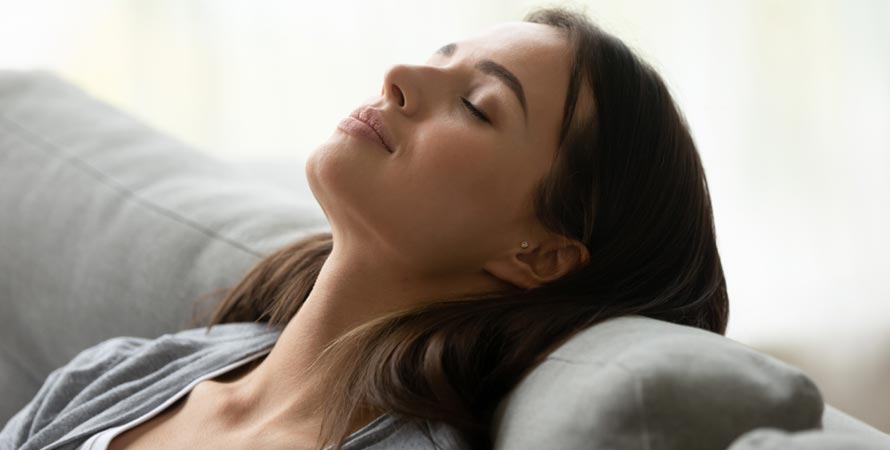
May act on your central nervous system.
When you do deep breathing techniques, your brain sends a signal to your body to reduce your heart rate, calm your breathing, and relax.
You may strengthen the interconnection between your breathing and brain.
May provide an opportunity for your body to set aside thoughts.
Practice mindfulness in motion is all about regulating your thoughts and not letting them control you. Therefore, it may aid in reducing a state of constant stress.
Although mental health illness can be complex to manage, it may offer a positive outcome when deep breathing is added to a therapeutic regimen to help lower stress and anxiety.
Stress can become a part of the vicious cycle of being in a stressful state, inability to fall asleep, and sleep deprivation causes increased stress. When you focus on your breathing, you are more attuned to breathing, instead not focused on thoughts of worry and distress.
May promote better management of current health conditions.
Deep breathing may benefit persons with asthma.
When attacks happen, or symptoms worsen, a person with asthma may inadvertently worsen it more when breathing isn’t under control after taking their rescue (quick-relief) medications.
Some may even do deep breathing as soon as they feel an attack is coming on and then administer their needed medications. Buteyko breathing[2] may help persons with asthma to control their breathing. However, this breathing technique is contraindicated for high blood pressure, heart disease, seizures, and other severe health conditions.
One simple method you may also benefit from is practicing any of these 9 breathing exercises for better sleep..
1. Body Scan Breathing
Body scanning technique is a sensory and mindfulness breathing exercise you can use to help you fall asleep.
It requires you to be laying in bed with arms relaxed to the sides. You will be searching for tense muscles on your body and to focus your breathing in relaxing those areas. Follow these steps to do this breathing exercise for sleep.
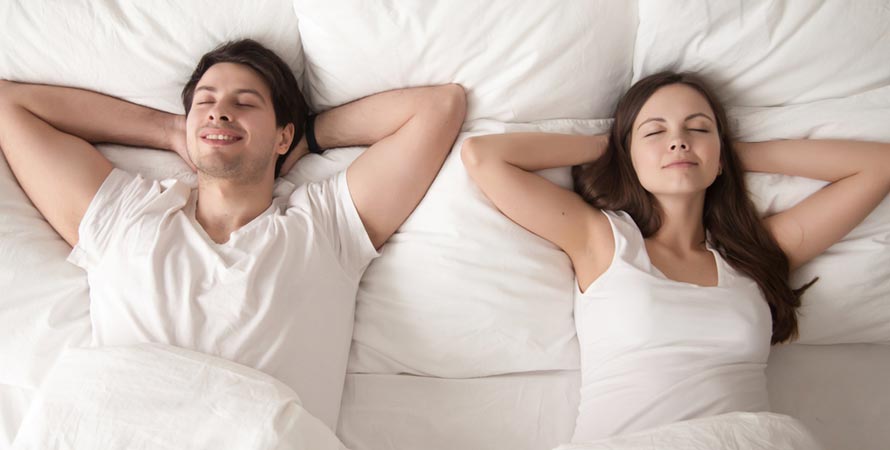
- Close your eyes as you lie down in bed.
- Pay particular attention to your exhalation. Begin by slow deep breaths.
- Notice how the bed feels on your body. Do you feel supported or uneasy on the surface?
- Start scanning your body by visualizing each part. Begin with the top of your head, moving and scanning your entire body down to the tip of your toes. Center your attention as you exhale and relax any tense muscle.
- Pause to put more time on a tense spot, let your mind release that tense muscle.
- Continue to inhale and exhale while visualizing your relaxed body.
- Connect with your mind as you say a restful phrase such as “sleep” or “relax”.
2. Diaphragmatic Breathing
This breathing method is also called belly breathing. Your diaphragm located at the base of your lungs helps you breathe. It involves deep breathing[3] using your abdominal muscles.
- Close your eyes as you lie on your bed with your knees slightly bent. You can use a pillow under your knees for support.
- Gently place one hand on your belly and the other on your chest.
- As you breathe deeply through your nose, make sure you inhale air into your stomach. It will rise as you inhale and go back down as you exhale through your mouth.
- Stay focused on the sound of your slow, deep breathing.
- Your hand on your chest should remain still.
- Continue to do this for 5 to 10 minutes.
3. 4-7-8 Breathing
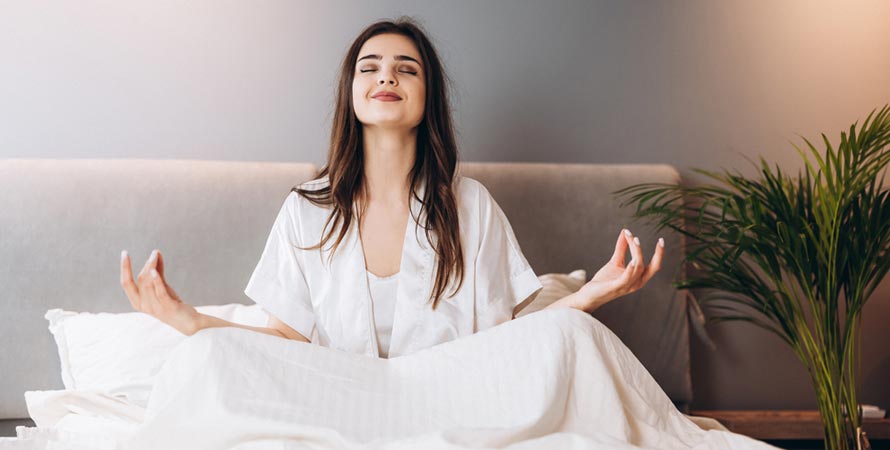
What’s with the serial numbers? It pertains to counting your inhalation, breath holding and exhalation. It was developed by Dr. Andrew Weil.
This breathing technique is performed while sitting comfortably with your back straight.
- Now put the tip of your tongue behind your upper front teeth. It’s important to keep it there for the whole breathing exercise.
- With pursed lips or slightly open mouth, make a whooshing sound as you exhale for 8 counts.
- As you inhale, count to 4 and make sure your mouth is closed.
- Next hold your breath for 7 counts.
- Then exhale completely with your mouth making the whooshing sound for 8 counts.
- That completes 1 round of breathing. Do 3 more times twice a day.
- Increase the number of cycles as you feel comfortable.
A word of caution for first-timers, you may feel dizzy. Make sure you are safe while performing the breathing exercises.
4. Counting Breaths
The simplest form of all the breathing exercises.
- You lie down with your arm to the sides or both hands on your abdomen.
- Close your eyes. Slowly count backwards from 100 to 1 paying attention when you exhale.
- As you exhale, relax your body and mind.
- You can also use 10 to 1 as you breathe slowly and repeat until you feel sleepy.
You can repeat this technique as much as you can. Be sure that you are focusing on sleep and counting the numbers.
5. Manta Breathing
Another breathing exercise you can incorporate with abdominal breathing.
- You can either sit or lie down during this exercise.
- Inhale while you recite a mantra “Inhale sleep” “I welcome sleep”
- Breathe out slowly and say “Exhale tension” “No more tension” “I am still”
- Pause in between breaths and while exhaling, release any tense muscles in your body.
- You can also mix imagery while you recite your mantras. Picture ocean waves coming in and out. Say your mantra as you breathe in and out.
6. Box Breathing
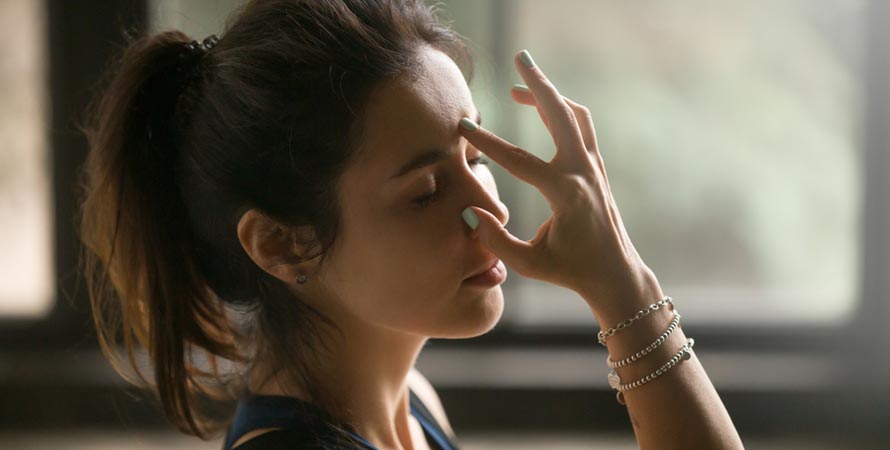
Box breathing[4] is another exercise you can use to sleep better.
- You can picture a box with assigned number 4.
- Each breath you take you count to 4.
- So, inhale and count to 4.
- Pause, count to 4.
- Exhale, counting down to 4.
- Pause for 4 counts before restarting the cycle.
7. Alternate Nostril Breathing
A yoga breathing exercise you can practice for sleep. Coordination is your friend while performing this method.
- Find a comfortable position while sitting.
- Place your non-dominant hand on your lap.
- Raise your dominant hand in front of your face gently.
- Your index and middle fingers should be resting between your eyebrows. For this exercise, you’ll use your thumb and ring finger.
- Close your eyes. Take a deep breath in and out through your nose.
- Close your right nostril with your thumb.
- Inhale slowly through your left nostril.
- Put your ring finger over your left nostril. You are now holding both nostrils close together.
- Hold your breath for a few seconds.
- Take a deep breath and open your right nostril. Exhale slowly through your right nostril.
- Pause when you finish exhaling.
- Slowly inhale through your right nostril.
- Keeping both nostrils closed.
- Open your left nostril. Exhale slowly. Hold your breath for a few seconds after you exhale.
- Repeat for 4 times or more if you can.
8. Bhramari pranayama breathing exercise (Bee Breathing Technique)
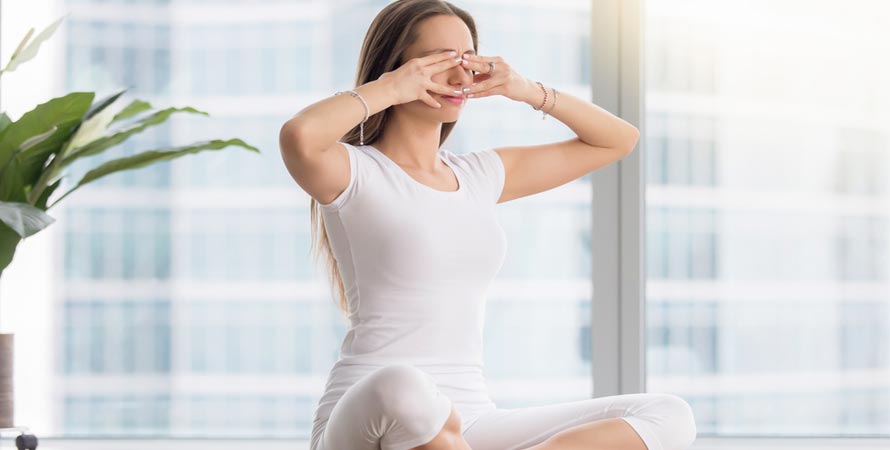
- Sit upright
- Place your index fingers on the cartilage of your ears to cover.
- Close your mouth as you practice this technique.
- Take a deep breath in through the nose.
- Then as you exhale through your nose and make a humming sound for as long as you can.
- You can either create a low or high pitched sound.
- Repeat a cycle for 5 to 9 times.
- You may also perform this technique while lying down. No need to cover your ears but focus your attention to the humming sound as you exhale.
- This breathing technique particularly helps with de-stressing, anxiety or anger.
9. Buteyko Breathing Exercise
- Be seated comfortably and keep your spine upright.
- Begin to breathe normally through your nose.
- Breathe out and hold.
- Cover both nostrils with your thumb and index fingers.
- Hold your breath until you have the urge to breathe again, then breathe in.
- Continue to breathe in and out normally for 10 seconds and repeat the cycle.
Conclusion:
Insomnia affects everyone, but most especially the older adults. Discuss your sleep problems together with your physician.
After careful approach and alternative methods for inducing sleep, when unsuccessful, your physician may prescribe medications to help you. When insomnia isn’t clinically addressed it poses serious complications on your health.
Take your sleep ritual seriously by staying consistent with your sleep hygiene[5] and tracking your sleep with a journal.
Utilize these breathing techniques for better sleep along with other adjunctive therapies such as meditation, mental imagery and muscle relaxation as you continue to improve your health.
Practicing deep breathing is free, convenient and easily accessible: anytime, anywhere.
Which breathing technique are you going to try today?






